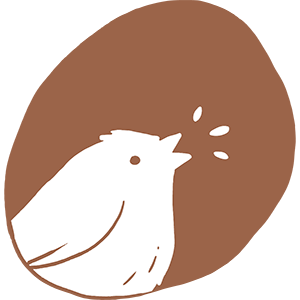When it comes time to start your baby on solid food, it’s often both exciting and overwhelming. It seems like everyone has a different approach: your pediatrician, your mother-in-law, and your best friend. As all moms know, there’s no shortage of advice or pressure when it comes to how you feed your baby.
Luckily, introducing your baby to different tastes and textures is also a special time, as well as an important and fun milestone in their first year of life. We have everything you need to know about the transition to solids and how to make it work for your family.
What Are The Signs My Baby is Ready for Solid Food?
Every child is different, but most babies are ready for solid food around six months. They should have good head control, have doubled their birth weight, and be able to sit up in their high chair.
Most babies will show interest in food, reaching for yours or opening their mouth for a spoon or sample. However, just because your baby seems ready doesn’t mean it will be a quick and painless process. It’s a new skill that needs to be developed, and some babies will adjust more quickly than others. Try not to put pressure on yourself or your baby during this transition time, and accept that each day will look different. Some days, your baby may refuse solids and instead want to nurse or bottle-feed more frequently, while other days the opposite will be true.

What Foods Should I Introduce to My Child First?
As you begin serving food, there will be a few decisions to make. Will you use homemade or store-bought baby food? Do you plan to avoid cereals and go straight for fruits and vegetables? And will you favor purées or finger foods? The truth is, you can mix and match methods in whatever way works for you, and your baby will thrive with any of these nutritious options. What you choose as your child's first foods will be based on personal preference, culture, and background.
Some options are:
- Fruits
- Veggies
- Rice, barley, or wheat cereal with expressed milk or infant formula
If you're still not sure where to start, Kids Eat in Color is a helpful resource for determining portion size and finding meal ideas.

Starting Good Eating Habits Early
Exposing your baby to a variety of healthy foods can help set them up for good eating habits early. This may be easier said than done, but persistence is key. Babies’ taste buds are constantly changing, and you may have to offer food as many as 20 times before they like it.
That being said, some babies will be fussy eaters. While this can be stressful, rest assured that your baby is getting the nutrition they need from breast milk or formula and that many babies outgrow pickiness. By nature, some babies will be more sensitive to taste, texture, and smell, and it will take longer for them to adjust to all the new sensations.

Consulting Your Pediatrician on Diet and Food Allergies
Your pediatrician will always advise you best on your baby’s best diet and how to approach allergenic foods, but there are a few generally accepted ground rules. Cow’s milk and honey should be avoided until after a year, as should sticky or round foods that pose a choking hazard. Stick with soft and dissolvable foods that are mashed, cut up, or puréed.
While parents used to avoid these (particularly nut products) until one year, current research suggests that introducing them earlier may help prevent food allergies. Introduce food allergens one at a time, so you can isolate any reaction.
The most common food allergens are:
- Dairy
- Fish
- Eggs
- Peanuts
- Tree Nuts
You can start with yogurt or cheese, followed by bits of scrambled egg, eventually mixing a little peanut butter or peanut powder into their baby food. Avoid serving peanuts or spoonfuls of peanut butter due to choking hazards.
If your child has a food allergy, they may experience vomiting, hives, or trouble breathing. It doesn't hurt to have some Benadryl on hand, and don’t hesitate to call 911 if needed. If the idea of this fills you with anxiety or there’s a family history of food allergies, speak to your pediatrician about your concerns.
Ideal Fruits and Veggies to Introduce
Just about all soft, mashable, or jarred fruits and veggies are a great place to start when it comes to fruits and veggies. Your baby may naturally gravitate towards sweeter foods, but make sure to offer a variety of flavors. You can make your own baby food by cooking or roasting fruits and vegetables and then puréeing, mashing, or slicing. You can also find a wide variety of jarred baby food at your local grocery store.
Some favorites are:
- Sweet potatoes
- Bananas
- Green beans
- Peas
- Apples (puréed)
- Avocados
- Squash
- Pears

What Kinds of Snacks Should I Give My Baby?
While your baby will not snack at first, they will likely work their way up to three small meals and two snacks around 9-12 months. Some babies will not need or want that much food, so pay attention to their hunger cues. Snacks start to come in handy for keeping your baby content in certain scenarios but make sure to prioritize your milk or formula and meals.
Snack ideas include:
- Yogurt
- Yogurt melts
- Dry breakfast cereal
- Grain puffs
- Crackers
- Cut-up fruit
When to Start Finger Foods
You can introduce finger food at six months, and many parents choose to start with finger food instead of purées. Try sharing bits of your meal with your baby and storing healthy alternatives in the fridge for convenience.
You can start with:
- Cut-up fruit (melon or banana)
- Strips of roasted sweet potato or apple
- Pieces of avocado toast
- Bite-size pieces of chicken or fish
- Scrambled or hard-boiled eggs
- Beans
- Pancakes
- Pasta

When to Introduce Fruit Juice
You shouldn’t introduce juice before six months of life, and most doctors don’t recommend giving babies (or even kids) juice very often. Juice has little nutrition and can cause diarrhea and tooth decay. When you do offer juice, serve 100% fruit juice and no more than four ounces a day. Offering water or juice at mealtimes is made easier and more fun with ourreusable silicone straws, which bend at the tip and can be cut to size. Even better: dentists recommend using straws to cut down on tooth decay. Straws bring the juice to the back of the mouth, leaving less chance for sugar to sit on those baby teeth.

How Should I Prepare Food For My Child to Eat?
There are two common methods of feeding solid food to infants: baby-led weaning (BLW) and purées. While some parents choose one or the other, a combined approach is also a great option. Feel free to start with purées, adding in small pieces of cut-up food, and working in different textures and flavors.
Keep in mind that the majority of your child’s nutrition before a year will come from breast milk or formula, and solid foods should complement that, never replace it.
Baby-led Weaning
BLW puts your baby in charge of a sensory eating adventure and means that instead of puréeing fruits and veggies or buying traditional baby food, they feed themselves. Check out our section on choking hazards below before getting started.
You can serve any cut-up or bite-size finger food, including:
- Eggs
- Chicken
- Fish
- Tofu
- Steamed veggies
- Fruit
- Pancakes
- Crackers
- Beans
- Pasta
It may take them a while to get the hang of it, but BLW encourages hand-eye coordination, healthy eating habits, and self-regulation. It’s also a lot of fun!
Traditional Spoon-feeding
Even if you do choose BLW, spoon-feeding will likely still be a part of your life. Other caregivers, such as grandparents, may feel more comfortable with spoon-feeding, and it’s also easier on the go. Also, be sure not to skip over the purée texture, or your child may end up grossed out by yogurt, soup, and applesauce.

As long as your baby is eating healthy, it's always good parenting!
Choking Hazards
As you introduce solids, start with soft and dissolvable foods, as well as food that can be mashed or cut up into small pieces (refer to our list of finger food for safe ideas). Your baby is relying on their gums to break food down, so keep this in mind when choosing meals. Do not serve round, hard, or sticky foods, and peels and skins should always be removed.
To reduce the risk of choking, avoid:
- Hot dogs
- Grapes
- Popcorn
- Uncooked apple
- Seeds and nuts
- Raw vegetables
- Candy
While it may scare you at first, babies gag often when they begin solids. Gagging is different from choking, and it’s their way of moving food around and getting used to new tastes and textures. If your baby is choking, they won’t be able to cry or make a sound, their skin or lips may turn blue, and they may wheeze or cough. If this happens, do not try to remove the object with your fingers. Call 911, and administer back blows and chest thrusts until help arrives. This is a worst-case scenario and likely won't happen, but it's helpful to know what to do!

Serving Meals
Serving your baby certainly doesn’t have to be complicated, but the right tools can help you both along. You may be shocked by the mess your sweet little baby can make, and we recommend using our silicone bibs andplacemats that wipe clean, are dishwasher safe, and will last your child through toddlerhood. A non-skid floor mat will also reduce the time you spend cleaning your floors. To help cut down on germs, clean and disinfect your food prep area often and wash your and baby’s hands beforehand. These tasks also signal that it's mealtime, easing them into a routine during their transition to solids.
Remember: Good Eating Habits Start Early!
Healthy eating is an important part of both childhood and adulthood, and your little one will learn from you. Model healthy eating habits and behaviors, and offer a variety of foods, including fruits, vegetables, grains, protein, and dairy. Exposing them to different tastes, textures, and flavors during their first year will benefit them for life.
Whether you choose BLW, purées, or a mix of both, you can practice responsive feeding, which helps foster intuitive eating in children. Pay attention to their hunger cues: feed them when they’re hungry, allow them to have more if they want it, and stop when they're full. Don’t feed them too quickly or force them to finish their food if they’ve lost interest.

Bonding Through Mealtime
Food is a powerful way to connect, spend time together, and form healthy habits, even during the first year of life. Let your baby lead the way, and do your best to keep the process safe and fun. While your baby will get messy, you can cut down on the cleanup time with our reusable silicone products like straws, placemats, and bibs. If you’re ever in doubt about nutrition or food allergies, be sure to consult your pediatrician. Above all, enjoy this precious milestone!






Leave a comment (all fields required)